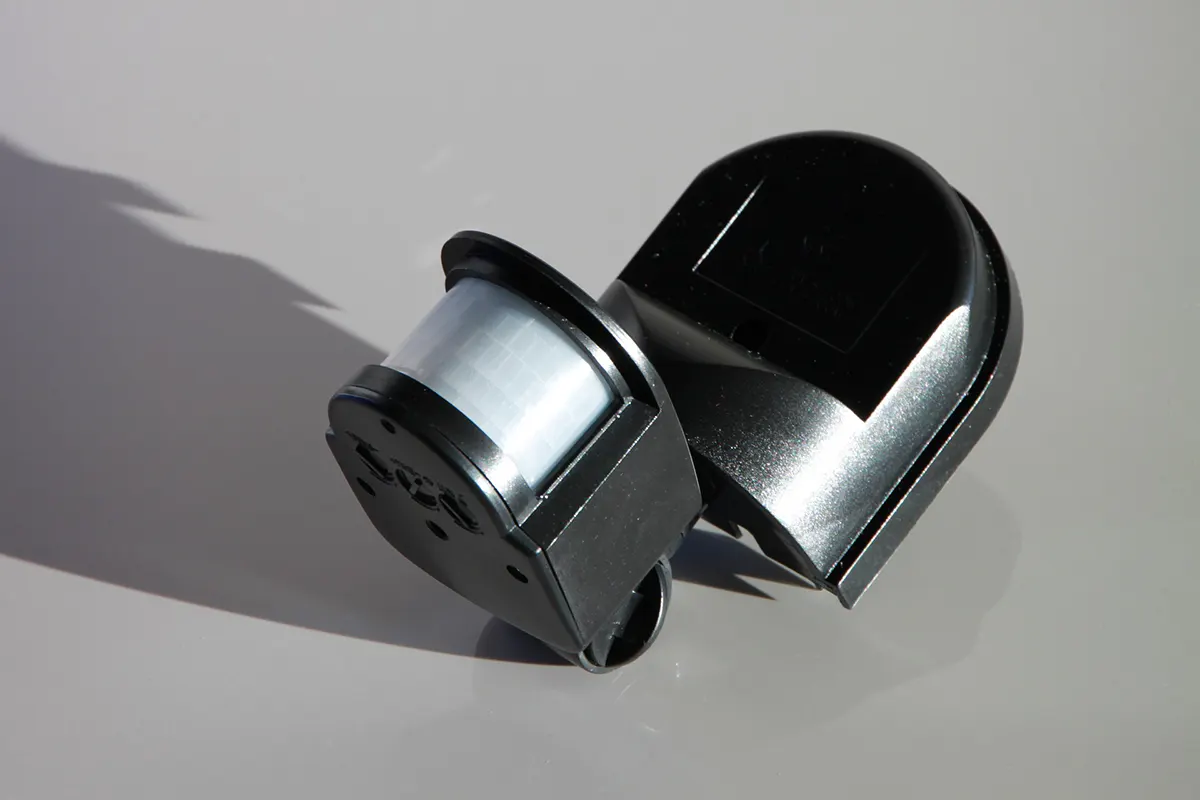
Motion sensors are becoming increasingly popular as more and more people become interested in home and business premises automation. But how do they work? In this comprehensive guide, we will go over how motion sensors operate and how they can be utilized to improve your day-to-day activities. We’ll also go through some of the most popular motion sensors today.
What are Motion Sensors?
These are devices that detect and respond to movement in an area. They can be used for various purposes, such as security, automation, and gaming.
Types of Motion Sensors
The Passive Infrared (PIR) Sensors
These are the most common motion sensors. They use infrared light to detect movement. Infrared light is a type of electromagnetic radiation that is invisible to the human eye but can be detected by electronic sensors.
They are often used in security systems to detect a person’s or animal’s body heat. When the sensor detects a change in infrared radiation, it triggers an alarm.
Ultrasonic Sensors
These work by emitting high-frequency sound waves and detecting any reflections of objects. These reflections calculate the object’s distance, shape, and speed. They are frequently employed in vehicle applications like parking assist systems.
Microwave Sensors
These sensors produce a microwave signal and then detect any changes in the signal generated by moving objects in the field. In security systems, microwave sensors are frequently utilized to detect even minor movements.
Photoelectric Sensors
These detect movement using a laser beam. They operate by directing a laser beam across an area and detecting any interruptions in the beam. They are frequently employed in industrial applications such as conveyor belt systems.
Tomographic Sensors
These employ a variety of sensing devices to generate a three-dimensional image of the monitored area. They produce waves and then measure the reflections of those waves off of objects. They are frequently employed in security applications such as entrance detection systems.
Area Reflective Sensors
These employ a single sensing device to detect movement across a wide region. They detect variations in the intensity of reflected light and are often used in outdoor applications such as perimeter security systems.
Why Do I Need a Motion Sensor?
There are many benefits to using a motion sensor. For one, they can help to deter burglars and intruders. If intruders know their movements will trigger an alarm, they are less likely to attempt to break into your home or business.
In addition, motion sensors can be used to automate lighting. For example, you can set up a motion sensor so that the lights turn on automatically when someone enters the room. This can be helpful if you often forget to turn the lights off when you leave a room or if you want to save energy by only using the lights when they are needed.
Motion sensors can also be used in commercial settings, such as retail stores and office buildings. In these settings, they can help to deter shoplifting and vandalism. Additionally, they can be used to automate doors so that employees do not have to remember to close the door every time they enter or exit the building.
Choosing a Motion Sensor
Some of the factors to consider include:
The detection area
There are three detection areas: perimeter-only, interior-only, or interior and perimeter.
If you need to protect a large area, such as a front yard, you’ll need a motion sensor with a long range. If you only need to protect a small area, such as a back porch, you can choose a motion sensor with a shorter range.
The sensitivity of the motion sensor
Some motion sensors are susceptible and will detect even the slightest movement, while others are less sensitive and will only detect more significant movements.
For home security applications, you will want a sensor that is highly sensitive so that it can detect even the slightest movements. For industrial applications, you may need a less sensitive sensor that does not trigger false alarms.
Ultimately, for hobby applications, you can choose a sensor with any sensitivity level depending on your needs. Choose a motion sensor appropriate for the activity level in that area.
The power source for the motion sensor
Some motion sensors are battery-powered and can be placed anywhere, while others must be plugged into an outlet.
Security system compatibility
Some motion sensors can be used with a home security system, while others cannot. If you have a home security system, choose a motion sensor that is compatible with that system.
Type of sensor
Most motion sensors use a passive infrared sensor (PIR), which detects changes in infrared radiation. Some motion sensors use a microwave sensor, which emits microwaves and detects changes in the reflection of those microwaves. PIR sensors are more common because they are less expensive and more reliable than microwave sensors.
Price of motion sensors
The price of a motion sensor varies depending on the features and quality of the sensor. Some motion sensors are fundamental and only detect movement. In contrast, others have more advanced features, such as sending an alert to your phone or connecting to a home security system. Choose a motion sensor that has the features you need and is within your budget.
Where to Buy
There are a few places you can buy motion sensors, depending on your needs. For home security systems, you can purchase them from security companies or online retailers. If you need a motion sensor for an industrial application, you can buy them from manufacturers specializing in industrial automation equipment.
Ultimately, if you need a general-purpose motion sensor for a hobby project, you can buy them from electronics stores or online retailers.
Why Hire Professionals to Install Motion Sensors?
Hiring professionals to install motion sensors is essential because they have the training and experience to do it correctly. They also have the necessary tools and equipment to do the job correctly.
Motion sensors are delicate devices that must be installed properly to work correctly. Improper installation can cause false alarms or, worse, missed detections. Hiring professionals to install your motion sensors provides an additional piece of mind. You can trust that the task will be done correctly and that your family will be safe.
Ask for references and check their credentials if you’re considering hiring specialists to install your motion sensors. Make sure they are licensed and insured and have experience installing the specific type of sensor you’re looking for.
FAQs
How do you trigger a motion sensor?
The most common method of triggering a motion sensor is to disrupt the infrared beam it generates. Simply walking in front of the sensor will cause the infrared beam to be disrupted and the alert to trigger.
Another way is by moving quickly through its field of view. This is because the sensor is designed to detect movement, so if something moves quickly through its field of view, it is more likely to trigger the alarm.
What is the range of a motion sensor?
A motion sensor’s range varies depending on the device, but most have a range of 20 to 30 feet. Some types can reach up to 100 feet but are usually more expensive.
How do you adjust the sensitivity of a motion sensor?
The sensitivity of a motion sensor can usually be adjusted by changing the settings on the control panel. Some models may also have a sensitivity adjustment knob that can make the sensor more or less sensitive.
Can you trick a motion sensor?
There are a few ways to trick a motion sensor, but the most common is using a piece of cardboard or other material to block the sensor’s field of view. This will cause the sensor to think there is no movement, so it will not trigger the alarm.
Another way to trick a motion sensor is moving slowly through its field of view. This is because the sensor is designed to detect movement, so if something moves slowly through its field of view, it is less likely to trigger the alarm.









